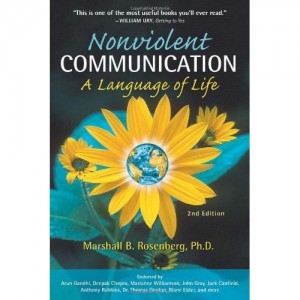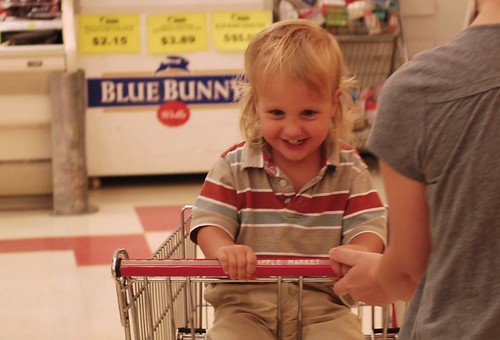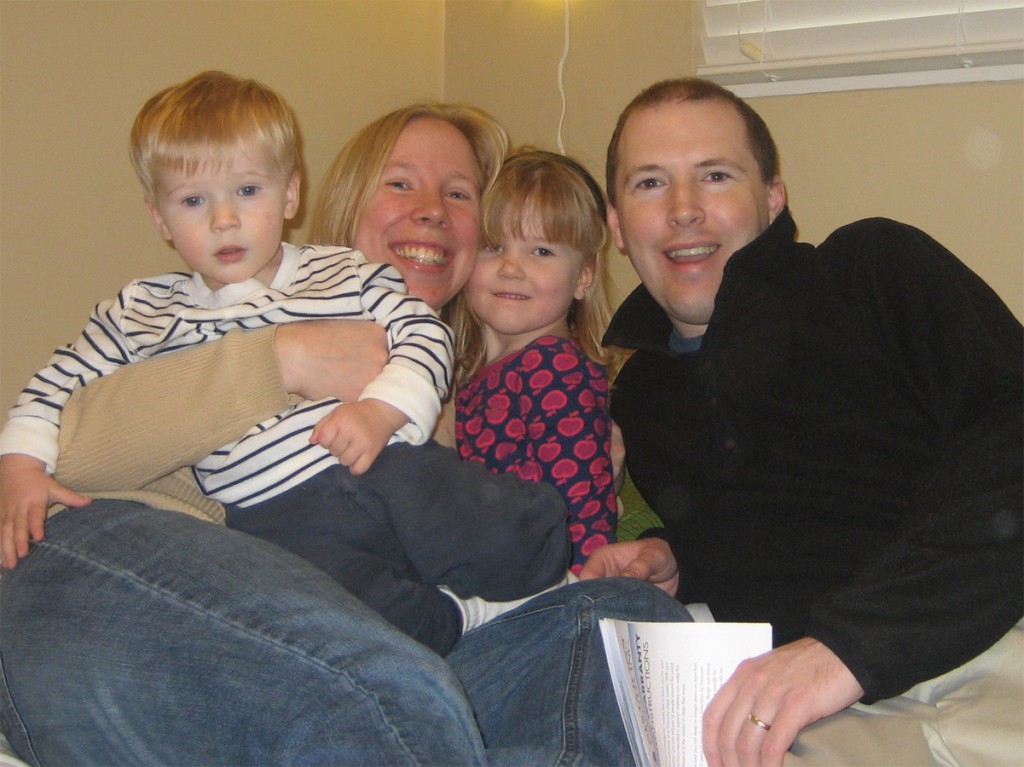I do not believe in forcing or shaming children into reciting social niceties when they don’t mean them, (1) but I can appreciate that children who practice those niceties can find it easier to function among peers and adults. And while I think that modeling is the most effective (and easiest!) way to impart the importance of “please,” “thank you,” and the like, here are a few more ideas on how to help children learn how to express their appreciation. (2)

- Turn thank you into artwork: If your little one enjoys arts and crafts, then help her say thank you through artwork. Any kind of craft will do, and you can jot a little note to include with it that explains what the intent is (if it’s not readily apparent).
- Say it in a different language: Make saying thank you educational and fun by teaching your little one how to say thank you in different languages. This article gives us “thank you” in 28 languages.
- Replace “good job” with “thank you”: Instead of saying “good job” when your little one does something helpful, try “Thank you for _____, it helps me _____.” Saying thank you regularly to your child is one of the best ways to teach him how to thank others – be his role model!
- Hugs and high fives (“Physical Touch”): I don’t know about you, but a child’s genuine excitement when he opens a gift, plus that impulsive hug (or high five), is enough thank you for me. I don’t need the ritual of a thank you card to reinforce for me that the child enjoyed the gift.
- Saying “thank you” in different words (“Words of Affirmation”): Let go of tradition – encourage your child to use whatever words come to mind to express appreciation for a gift. Instead of the bland “thank you for my bike” note, try “We put playing cards on the spokes of my bicycle wheels, now whenever I ride it, you can hear me coming! My friends thought it was so cool, they all put cards on their wheels too. This bike is so fun!” A child’s authentic enthusiasm will shine through so much more in their own words than in any of the more traditional words we could force them to use.
- Share the fun (“Quality Time”): If your little one is happy sharing toys and time with others, why not set up a play date with the thank-ee? Playing with a gift with the gift giver might be more appreciated than any thank you note.
- Make something to say thank you (“Gifts”): Some little ones love to create – whether it is painting a picture, baking cookies, or putting a collage together, a gift from your child’s heart is an incredible token of thanks.
- Do something nice (“Acts of Service”): When I lived at home, one of the ways I would tell my parents “thank you” for all that they did for me was to clean the house. I still occasionally go over and clean while Kieran is playing – simply because I know it will make my parents smile. If your child’s love language is service, find ways that they can lend a hand to someone who has done something nice: decorating for a holiday, weeding the garden, odd (and easy) chores; there are many ways a child can be helpful, and it can turn into a learning experience too!________________
And a couple more ideas, just in case you have a little one who has not yet caught on to this social grace: - Say it yourself: Really, when adults ask children to say “please” or “thank you,” all we’re doing is proving to the other person that we have manners. If you’re that concerned about making a good impression, say thank you yourself: kindly, genuinely, without the tone that you wish your child had done it instead (because all that will do is shame your child, which will not motivate them to say thank you – from their heart – in the future). Your gracious modeling will make a big impression./li>
- Don’t force the issue: Finally, relax. Don’t force thank you’s, they’ll come in time. Shaming or forcing a child into saying a grudging thank you may make you feel better in front of others, but it can backfire by making your child feel resentful. Make saying “thank you” a fun learning experience, not an unpleasant task that must be complied with reluctantly.
________________
Discover your child’s “love language”: Some people believe that “Every child gives and receives love in their own unique and special way . . . . There are basically five different ways children, and all people, speak and understand emotional love: Physical Touch, Words of Affirmation, Quality Time, Gifts and Acts of Service.” (3) Here are a few ideas that build on the idea of “love languages”:
How does your child like to say thank you?
(1) See, for example, Seven Alternatives to Forced Apologies or Focusing on Children’s Needs
(2) Remember, none of these ideas will be very effective at turning “thank you” into a positive experience if they are forced. Watch for your child’s cues, keep trying until you find something that resonates with her!
(3) Finding Out Your Child’s Love Language







